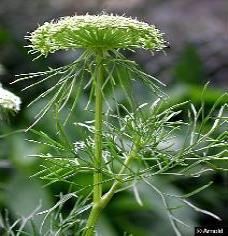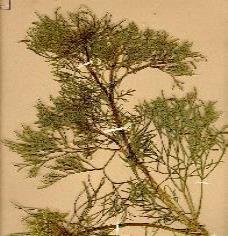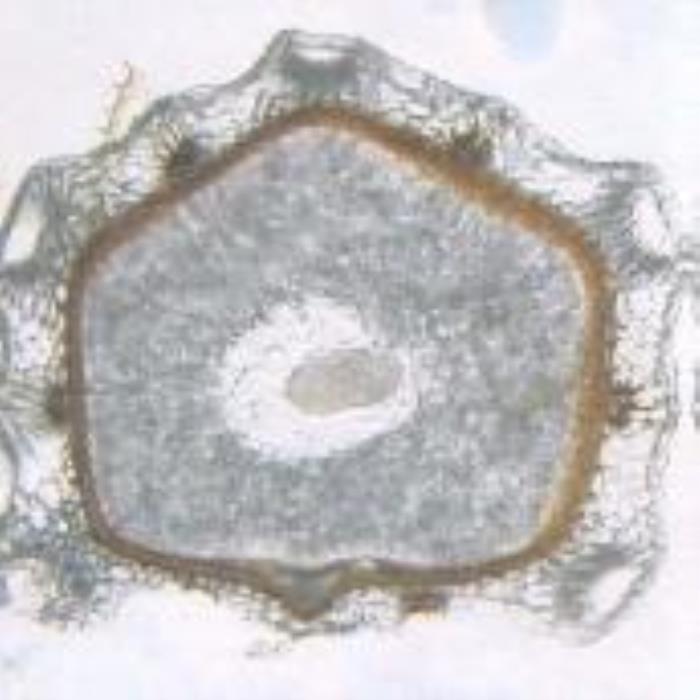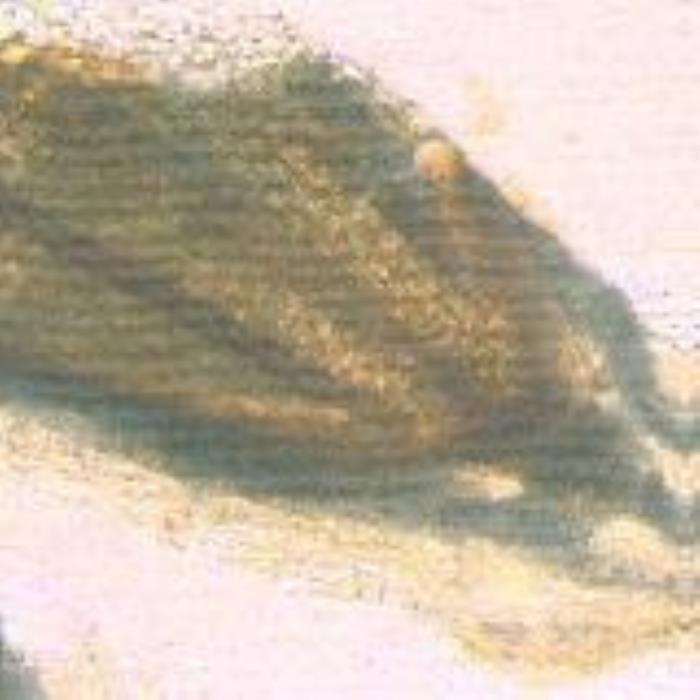
الخلة / Ammi visnaga
Daucus visnaga L.
Khilla Baladi, Bizr Alkhilla, Kulla, Khilal, Sowak Alnabi, Saq Alaroos
Toothpick Plant, Bishop’s Weed
Khilla
Apeaceae

Whole Plant

Herbarium Sample
Ethnobotanical Characteristics
Description
Annual herb, 30-150 cm high, slightly aromatic stems erect, robust, much branching, cylindrical, furrowed, densely leafy. Leaves alternate, with special odor, with broad leaf sheath, lower leaves pinnate, with narrowly- liner lobes; middle and upper leaves 2-3 pinnate, with filiform lobes. Inflorescence dense umbel with numerous rays (to 120 or more) slender in flower, thickened and stiff in fruit, hence used as toothpick. Bracts pinnatisect, as long as or longer than the rays; bracteoles small, flowers white, pedicels erect, rigid in fruit, fruit cremocarp about 2 mm long, glabrous with thick ribs, separated into two mericarps, mericarp 1mm c x 2mml., greenish brown.
Habitat & Distribution
Widespread in the Mediterranean and western Asia, found also in North & South America and Europe. In U.A.E it is cultivated in private farms.
Part(s) Used
Seeds, rays of umbel
Traditional & Medicinal Uses
Seeds are diuretic, carminative, stimulant, antispasmodic, vasodilator. Seeds used to treat congestion of prostrate gland, urinary diseases and renal stones, asthma remedy, respiratory problems, circulatory herb used to relax the coronary arteries, and helps to improve blood supply to the heart muscle and thereby eases angina, and also for dental care. The dry umbel rays used as toothpicks. Pharmacognosy and Phytochemistry.
Pharmacognosy and Phytochemistry
Parts studied
Fruits
Microscopical Description
A transverse section of the mericarp is an almost regular pentagon with one of its sides slightly longer which is the commissural surface at which the two mericarps are attached. The epicarp is composed of a layer of indistinct colorless, polygonal, papillose, thin-walled parenchyma covered with faintly striated cuticle. The mesocarp encloses vascular strands on the outer side of which is found a large space (lacuna) just below the epidermis of each primary ridge. Below the epidermal part of the secondary ridges are a group of radiating club-shaped parenchyma cells that are associated with the secretroy canals known as vittae which are filled with dense brown contents. The endocarp is composed of elongated thin-walled cells which are surrounding the seed testa. The testa is composed of one or two layers of thin-walled cells that contain brown pigments. The endosperm of the seed consists of almost rounded parenchyma cells having intercellar spaces. The cells contain aleurone grains and micro rosette crystals of calcium oxalate (DPS, ZCHRTM unpublished results).

a) T S of seed

b) Section of seed

LS of seed
(a). TS of the one-seeded khella fruit (mericarp) showing its characteristic features including the pentagon shape brownish seed coat, large endosperm, vascular tissues, vittae, lacunae, and here is showing a cotyledon. (b). Section of the one-seed fruit showing the cotyledons surrounded by the endospermic parenchyma cells. (c). Longitudinal section of the fruit (mericarp) near its tip showing the vascular tissues (dark grey) and the vittae (oil canals, violet brown). (Magnifications: x 100, x 400 and x 100, respectively).
Organoleptic characteristics
Appearance: Solid powder Colour: Brown
Odour: Aromatic
Taste: Bitter
Physico-chemical constants
Loss in weight on drying at 105°C: 4.60
Solubilities (%)
Alcohol solubility: 16.8-18.40
Water solubility: 34 .4-35.04
10%ethanolic extractive: 32 – 34
Ash values (%)
Total ash: 9.4
Acid insoluble ash: 0.6
Water soluble ash: 2.9
Successive extractives (%)
Petroleum ether: 3.40
Chloroform (60-800C): 6.10
Absolute ethanol: 11.10
10% ethanolic water extract: 19.50
pH values
pH value of 1% solution: 5.92
pH value of 10% solution: 5.64
The above results are under process of publication(DPS ZCHRTM unpub. Results).
Chemical Constituents
The major constituents are ɣ -pyrones (furanochromone) derivates, 2-4%) with the principle compounds being khellin (0.3-1.2%) and visnagin (0.05-0.3%) other ɣ- pyrones of significance are khellinol, amiol, khellol and its glucoside khellenin (0.3- 1.0%). A second group of major constituents are the coumarins (0.2-0.5%), the principle of which is the pyranocoumarin, visudin. Essential oil contains camphor, α- terpinol, linatool.( DPS, ZCHRTM Unpub. results ; Dic. Nat. Prod.,Buckingham 1994).
Pharmacological and Toxicological studies
Visnagin, an active principle extracted from the fruits of Ammi visnaga, exhibits peripheral and coronary vasodilator activities and has been used for the treatment of angina pectoris (Durate et. al., 1995). Khellin and visnagin, both inhibited the spasms, indicating an involvement of a calcium channel-blocking mode of action for visnagin (Rauwald and Odenthal, 1994). Khellin was found to increase HDL-cholesterol in normolipidemic subjects (Harvengt et. al., l983). Visnagin caused non-specific inhibition of vascular smooth muscle contractility (Durate at. al., l995).Ammi visnaga seeds were studied on experimentally induced kidney stones in male Wistar albino rats. Uremia and hyperbilirubinemia observed in glycolic acid control group were found to be ameliorated by Ammi visnaga seed extract treatment (Khan et. al., 2001). Ammi visnaga extract was reported to be good for expulsion of urinary crystals (Westendorf, et. al., l981) The plant was found to possess hypoglycemic activity (Yaniv et. al., l987).
The pharmacological and toxicological studies carried out in our laboratory and the results in brief, on Ammi visnaga ( 10% ethanolic extract) have been given below. The results presented without references showed unpublished data (ZCHRTM, DBMS Unpub. Results).
| ACTIVITY | RESULTS |
| Antinociceptive activity-Writhing | Not found effective. |
| Anti-hypertension activity- Anesthetic rats | Not effective at the dose studied. |
| Vasorelaxant activity-Isolated aortic strip | Produced relaxation. |
| Vasorelaxant activity-Isolated rat mesenteric bed | Vasorelaxant. |
| Cardiovascular studies | Produced hypotension (Zakaria et. Al., 2000c) |
| Effect on uterine muscle-Isolated rat uterus | Shifted DRC (Dose response curve). |
| Anti-coagulant activity | Increased prothrombin time. |
| Effect on GIT smooth muscle- Isolated rabbit jejunum | Reduced amplitude |
| Effect on GIT smooth muscle- Isolated rat fundus | Reduced resting tension. |
| Gross behavioral studies- Tremor/Twitches | Produced tremors. |
| Gross behavioral studies- Respiration rate | Respiration increased initially. |
| Gross behavioral studies- Diarrhea, Urination | Not effective. |
| Mortality | Mortality at higher dose recorded. |
| Motor co-ordination (String & Platform test) | Not effective. |
| Anti-asthmatic activity-Guinea pig tracheal chain | Bronchorelaxant. |
| Anti-asthmatic activity-In vivo studies in Guinea pig | Increased onset time. |
| Anti-tussive activity-SO2 induced | Reduced recovery time. |
| Acute toxicity studies | Produced symptoms. |
| LD50 evaluation oral | >6.4 g/kg. |
| LD50 evaluation i.p. | Between 1.6-3.2 g/kg. |
Summary of the results
Ammi spp. is strong vasorelaxant. The extract is found brochio-relaxant.
References
- Batanouny, K.H. et al, Wild Medicinal Plants in Egypt: an Inventory to Support Conservation and Sustainable Use. (1999) Palm Press, Egypt, ISBN 977 5089 24 7.
- Boulos, L., El Hadidi, M.N., The Weed flora of Egypt. (1994 ) Revised Edition. The American University in Cairo Press, Egypt. ISBN 977 424 323 4
- Buckingham, J.(edit.), (1994). Dictionary of Natural Products. Chapman& Hall.Vol.7. London, UK. p400
- Chevallier ,A. The Encyclopedia of Medicinal Plants. (1996) Dorling Kindersley Limited, London. ISBN 0 7513 03143.
- Department of Biomedical Sciences, Zyed Complex for Herbal Research and Traditional Medicine, Unpublished results.
- Department of Pharmacognostic Sciences, Zyed Complex for Herbal Research and Traditional Medicine (ZCHRTM ),unpublished results.
- Duarte J, Perez-Vizcaino F, Torres AI, Zarzuelo A, Jimenez J, Tamargo J. (1995) Vasodilator effects of visnagin in isolated rat vascular smooth muscle. Eur J Pharmacol. 14;286(2):115-22.
- Durate J, Vallejo I, Perez-Vizcaino F, Jimenez R, Zarzuelo A, Tamargo (19970 J.Effects of visnadine on rat isolated vascular smooth muscles. Planta Med. 63(3):233-6.
- Harvengt C, Desager JP., (1983) HDL-cholesterol increase in normolipaemic subjects on khellin: a pilot study. Int J Clin Pharmacol Res. 3(5):363-6.
- Khan ZA, Assiri AM, Al-Afghani HM, Maghrabi TM., (2001) Inhibition of oxalate nephrolithiasis with Ammi visnaga (AI-Khillah). Int Urol Nephrol. 33(4):605-8.
- Kotb, T. F. Medicinal Plants in Libya. Arab Encyclopedia House. (1985) Tripoli-Libya.
- Radhakrishnan, R..,Zakaria, M.N.M.,Islam,M.W.Ismail,A.7Al Attas A,(2000) Relaxant effects of Ammi visnaga& Ruta chapalensis on guinea pig tracheal smooth muscle.J.Pharm Pharmacol 52 (suppl)227.
- Rauwald HW, Brehm O, Odenthal KP. (1994) The involvement of a Ca2+channel blocking mode of action in the pharmacology of Ammi visnaga fruits. Planta Med. 60(2):101-5.
- Weiss, R.F., Fintelman,V. Herbal Medicine. (2000) Second Edition; Thieme, Stuttgart. New York.
- Westendorf J, Vahlensieck W., (1981) Spasmolytic and contractile effects of a combination product from plants on the smooth muscle of the guinea pigs, Arzneimittelforschung. 31(1):40-3.
- Yaniv Z, Dafni A, Friedman J, Palevitch D. (1987) Plants used for the treatment of diabetes in Israel. J Ethnopharmacol. 19(2):145-51.
- Zakaria, M.N.M., Islam, M.W., Radhakrishnan, R., Liu, X.M., Chen, H.B., Chan, K. & Al Attas, A. (2000a). Hypotensive effects of Ammi visnaga and Ruta chalepensis extract in DOCA-salt treated rats. J. Pharm Pharmacol 52, (Suppl.) 268.
- Zakaria, M.N.M., Islam, M.W., Rdhakrishnan, R., Chen, H.B., Liu, X.M., Chan, K., & Attas, A., (2000b). Cardiovascular effects of Ammi visnaga extracts rats. J. Pharm Pharmacol 52 (Suppl.) 267.
- جبر، ودیع. معجم النباتات الطبیة. ( 1987 ) دار الجبل –بیروت.
- محمد العودات، جورج لحام النباتات الطبیة واستعمالاتھا،( 1988 ) الجزء الأول- الطبعة •الثانیة.الأھالي، سوریا
